Light sheet fluorescence microscopy quantifies calcium oscillations in root hairs
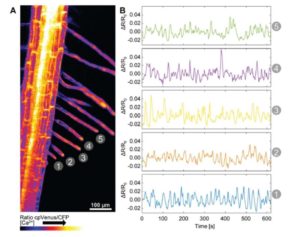 Light sheet fluorescence microscopy (LSFM) is a powerful imaging tool; unlike confocal microscopy, which illuminates a sample one small volume at a time, LSFM illuminates a complete optical section at a time, greatly speeding up the imaging process and lowering phototoxic effects. Candeo et al. use close-to-physiological imaging of tip-growing root hairs through the combination of LSFM with the Yellow Chameleon YC3.6 reporter, which provides a sensitive readout for calcium and can be used to record calcium oscillations in the root hair. The authors recorded both low- and high-frequency calcium oscillations, and showed a correlation between the high-frequency oscillations and the pulsatile behaviour of root hair growth. Plant Cell Physiol. 10.1093/pcp/pcx045
Light sheet fluorescence microscopy (LSFM) is a powerful imaging tool; unlike confocal microscopy, which illuminates a sample one small volume at a time, LSFM illuminates a complete optical section at a time, greatly speeding up the imaging process and lowering phototoxic effects. Candeo et al. use close-to-physiological imaging of tip-growing root hairs through the combination of LSFM with the Yellow Chameleon YC3.6 reporter, which provides a sensitive readout for calcium and can be used to record calcium oscillations in the root hair. The authors recorded both low- and high-frequency calcium oscillations, and showed a correlation between the high-frequency oscillations and the pulsatile behaviour of root hair growth. Plant Cell Physiol. 10.1093/pcp/pcx045


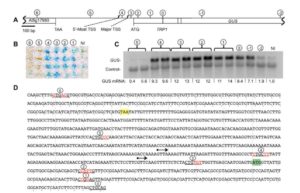 The site at which transcription begins is traditionally thought to be determined in the proximal promoter by assembly of the pre-initiation complex just upstream of the transcription start site (TSS). New results from Gallegos and Rose challenge this assumption. Prior studies have shown that the presence of an intron near the TSS can boost transcript levels, an effect known as intron-mediated enhancement (IME). While exploring the constraints of intron position on IME, the authors found that in some conditions introns can change the location of the TSS and substitute for a missing proximal promoter. The mechanism of these effects is not clear, but the authors specture it may involve the formation of a region of open DNA that enables access by the transcriptional machinery. Plant Cell
The site at which transcription begins is traditionally thought to be determined in the proximal promoter by assembly of the pre-initiation complex just upstream of the transcription start site (TSS). New results from Gallegos and Rose challenge this assumption. Prior studies have shown that the presence of an intron near the TSS can boost transcript levels, an effect known as intron-mediated enhancement (IME). While exploring the constraints of intron position on IME, the authors found that in some conditions introns can change the location of the TSS and substitute for a missing proximal promoter. The mechanism of these effects is not clear, but the authors specture it may involve the formation of a region of open DNA that enables access by the transcriptional machinery. Plant Cell 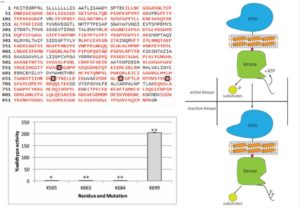 Membrane proteins are some of the most interesting cellular proteins, serving as sensors and transducers of diverse signals, yet they also are the most challenging to investigate because they require lipid interactions for proper structure and function. Recently, cell-free expression systems for membrane proteins have been developed that incorporate lipid nanodiscs consisting of membrane scaffold proteins (MSPs, derived from apolipoproteins) that wrap around a patch of phospholipid bilayer. FERONIA is a plant receptor-like kinase and part of a very large but not well characterized family of membrane proteins. By co-expressing FERONIA in a cell-free expression system with MSP and lipids, Minkoff et al. were able to characterize it functionally in vitro, including assaying the kinase activity of various point mutations for comparison to predictions from molecular genetic studies. This work also demonstrates the applicability of this expression system for the study of plant receptor-like kinases. J. Biol. Chem.
Membrane proteins are some of the most interesting cellular proteins, serving as sensors and transducers of diverse signals, yet they also are the most challenging to investigate because they require lipid interactions for proper structure and function. Recently, cell-free expression systems for membrane proteins have been developed that incorporate lipid nanodiscs consisting of membrane scaffold proteins (MSPs, derived from apolipoproteins) that wrap around a patch of phospholipid bilayer. FERONIA is a plant receptor-like kinase and part of a very large but not well characterized family of membrane proteins. By co-expressing FERONIA in a cell-free expression system with MSP and lipids, Minkoff et al. were able to characterize it functionally in vitro, including assaying the kinase activity of various point mutations for comparison to predictions from molecular genetic studies. This work also demonstrates the applicability of this expression system for the study of plant receptor-like kinases. J. Biol. Chem. 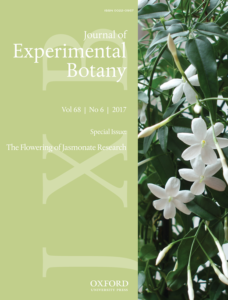 Jasmonates are a family of compounds including jasmonic acid and its derivatives that regulate many plant processes from germination to defense. The Journal of Experimental Botany has a special issue on jasmonate research, which commemorates the advances in this field in the ten years since the JAZ proteins were identified. The open access editorial overview by Zhu and Napier (
Jasmonates are a family of compounds including jasmonic acid and its derivatives that regulate many plant processes from germination to defense. The Journal of Experimental Botany has a special issue on jasmonate research, which commemorates the advances in this field in the ten years since the JAZ proteins were identified. The open access editorial overview by Zhu and Napier (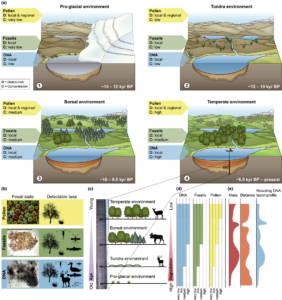 Fossils have been extremely useful in efforts to reconstruct the past, but recently the analysis of ancient DNA (aDNA) has taken off. Parducci et al. describe the value of lake sediments as sources of ancient DNA from which to gain insights into the plant populations of ancient times. Lakes are found all over the world, collect DNA from large areas, and retain the DNA in age-correlated layers. Sources of aDNA in sediments, best practices for handling sediment samples to avoid contamination, and bioinformatics tools are discussed. New Phytol.
Fossils have been extremely useful in efforts to reconstruct the past, but recently the analysis of ancient DNA (aDNA) has taken off. Parducci et al. describe the value of lake sediments as sources of ancient DNA from which to gain insights into the plant populations of ancient times. Lakes are found all over the world, collect DNA from large areas, and retain the DNA in age-correlated layers. Sources of aDNA in sediments, best practices for handling sediment samples to avoid contamination, and bioinformatics tools are discussed. New Phytol. 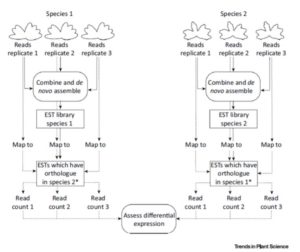 Omics approaches have helped shed light on how plants relate to their environment and how they respond to changes in it. Although still relatively underutilized, comparative transcriptomics and proteomics approaches also can be applied to study mechanisms of plant adaptation. Voelckel et al. discuss the pros and cons of using omics approaches to study adaptability, from differential expression of key genes between closely related species, to proteome studies giving insights into post-translational modifications, protein location, protein turnover, etc. Integrating phenotypic, proteomic, transcriptomic and environmental data can identify genes underlying the expression of adaptive traits. (Summary by
Omics approaches have helped shed light on how plants relate to their environment and how they respond to changes in it. Although still relatively underutilized, comparative transcriptomics and proteomics approaches also can be applied to study mechanisms of plant adaptation. Voelckel et al. discuss the pros and cons of using omics approaches to study adaptability, from differential expression of key genes between closely related species, to proteome studies giving insights into post-translational modifications, protein location, protein turnover, etc. Integrating phenotypic, proteomic, transcriptomic and environmental data can identify genes underlying the expression of adaptive traits. (Summary by  Rice is a staple food for half of the world’s population, but it accumulates the toxic metalloid arsenic (As), which is present in soils and in plants in two forms, arsenate (AsV) and arsenite (AsIII). Chen et al. review the genetics and biochemistry of As uptake and sequestration into the rice grain, including a discussion of transporters, As efflux, volatilization and sequestration. The identification of these processes has supported studies to knockout or overexpress genes that can limit As acccumulation in the grain. These candidate genes can then be targeted for modification by gene editing or selective breeding to address the serious public health consequences of arsenic in rice. Front. Plant Sci.
Rice is a staple food for half of the world’s population, but it accumulates the toxic metalloid arsenic (As), which is present in soils and in plants in two forms, arsenate (AsV) and arsenite (AsIII). Chen et al. review the genetics and biochemistry of As uptake and sequestration into the rice grain, including a discussion of transporters, As efflux, volatilization and sequestration. The identification of these processes has supported studies to knockout or overexpress genes that can limit As acccumulation in the grain. These candidate genes can then be targeted for modification by gene editing or selective breeding to address the serious public health consequences of arsenic in rice. Front. Plant Sci. 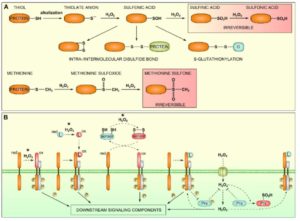 Both receptor-like protein kinase (RLK) and reactive oxygen species (ROS) signaling have been shown to affect a plethora of plant processes, including growth, metabolism, development, and environmental responses. To date, previous reviews have focused on mechanisms that govern either ROS or RLK signaling; however, Kimura et al. examined mechanisms that govern cross-talk between ROS and RLK and demonstrate ways in which RLKs both influence and are influenced by ROS signaling. Several key factors and a variety of biological contexts that they function in are considered within the context of receptor-mediated redox signaling in response to extra- and intra-cellular cues. (Summary by
Both receptor-like protein kinase (RLK) and reactive oxygen species (ROS) signaling have been shown to affect a plethora of plant processes, including growth, metabolism, development, and environmental responses. To date, previous reviews have focused on mechanisms that govern either ROS or RLK signaling; however, Kimura et al. examined mechanisms that govern cross-talk between ROS and RLK and demonstrate ways in which RLKs both influence and are influenced by ROS signaling. Several key factors and a variety of biological contexts that they function in are considered within the context of receptor-mediated redox signaling in response to extra- and intra-cellular cues. (Summary by  Gas exchange and transpiration are regulated by the stomatal aperture, which is itself regulated by the changes in volume of the guard cells that overlay the stomatal pore. When triggered to open, solutes such as K+ and Cl– enter the guard cell through ion transporters, followed osmotically by water; as the cells enlarge, the gap between them widens permitting gas and water vapour transit. Ion transporters at the guard cell plasma membrane are more accessible for patch clamping, and in recent years our knowledge of these essential transporters has increased dramatically. However, ultimately it is the movement of ions and water into the vacuole that controls stomatal aperture, and our understanding of the tonoplast (vacuolar membrane) transporters lags behind those of the plasma membrane. Eisenach and De Angeli review ion transport at the guard cell vacuole, drawing on electrophysiological studies and results from Arabidopsis genetics, and discussing the contributions of vacuolar pH and membrane potential to stomatal movement. Plant Physiol.
Gas exchange and transpiration are regulated by the stomatal aperture, which is itself regulated by the changes in volume of the guard cells that overlay the stomatal pore. When triggered to open, solutes such as K+ and Cl– enter the guard cell through ion transporters, followed osmotically by water; as the cells enlarge, the gap between them widens permitting gas and water vapour transit. Ion transporters at the guard cell plasma membrane are more accessible for patch clamping, and in recent years our knowledge of these essential transporters has increased dramatically. However, ultimately it is the movement of ions and water into the vacuole that controls stomatal aperture, and our understanding of the tonoplast (vacuolar membrane) transporters lags behind those of the plasma membrane. Eisenach and De Angeli review ion transport at the guard cell vacuole, drawing on electrophysiological studies and results from Arabidopsis genetics, and discussing the contributions of vacuolar pH and membrane potential to stomatal movement. Plant Physiol.